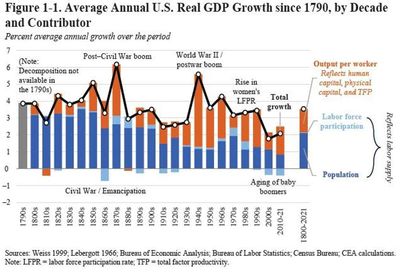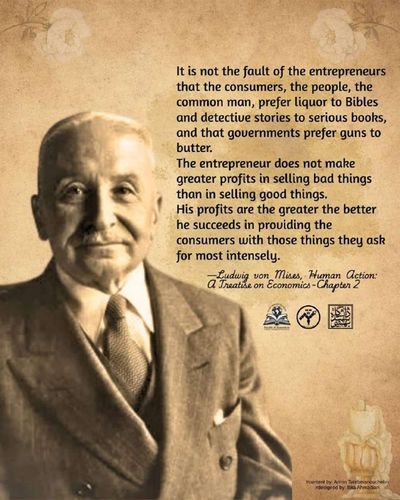
Nairaland Pulse | News

Анатолий Шарий

Реальний Київ | Украина

Мир сегодня с "Юрий Подоляка"

Труха⚡️Україна

Николаевский Ванёк

Инсайдер UA

Реальна Війна | Україна | Новини

Лачен пише

Nairaland Pulse | News

Анатолий Шарий

Реальний Київ | Украина

Мир сегодня с "Юрий Подоляка"

Труха⚡️Україна

Николаевский Ванёк

Инсайдер UA

Реальна Війна | Україна | Новини

Лачен пише

Nairaland Pulse | News

Анатолий Шарий

Реальний Київ | Украина

کارگروه زبان انگلیسی انجمن اقتصاد شهید بهشتی
TGlist rating
0
0
TypePublic
Verification
Not verifiedTrust
Not trustedLocation
LanguageOther
Channel creation dateMar 04, 2025
Added to TGlist
Apr 29, 2025Records
17.05.202523:59
278Subscribers27.03.202523:59
0Citation index13.04.202523:59
389Average views per post13.04.202523:59
389Average views per ad post05.05.202513:58
19.05%ER06.05.202514:56
120.61%ERRGrowth
Subscribers
Citation index
Avg views per post
Avg views per ad post
ER
ERR


17.05.202517:34
The Essential Adam Smith: The Role of Government
More info: essentialadamsmith.org
Subtitles and Edits by:
- Sheyda Fazeli
#EconVids
@ELWG_EcoSbu
More info: essentialadamsmith.org
Subtitles and Edits by:
- Sheyda Fazeli
#EconVids
@ELWG_EcoSbu


15.05.202517:33
People in richer countries spend more on food, but it’s a smaller share of their overall spending
The scatter plot in the image highlights this trend clearly: as the annual amount spent on food (shown on the x-axis) increases, the share of total spending allocated to food (on the y-axis) generally decreases.
The chart confirms that people in richer countries spend more on food overall, but it makes up a smaller share of their total spending. For instance, although food accounted for less than 10% of Swiss consumer spending, compared to nearly 60% in Kenya, the average Swiss food budget was more than four times that of Kenya. This pattern, visible across countries' data, reflects that people in low- to middle-income countries have less money to spend on food and often cannot afford a healthy diet.
- By Parnian Sefat
#EconAnalysis
@ELWG_EcoSbu
The scatter plot in the image highlights this trend clearly: as the annual amount spent on food (shown on the x-axis) increases, the share of total spending allocated to food (on the y-axis) generally decreases.
The chart confirms that people in richer countries spend more on food overall, but it makes up a smaller share of their total spending. For instance, although food accounted for less than 10% of Swiss consumer spending, compared to nearly 60% in Kenya, the average Swiss food budget was more than four times that of Kenya. This pattern, visible across countries' data, reflects that people in low- to middle-income countries have less money to spend on food and often cannot afford a healthy diet.
- By Parnian Sefat
#EconAnalysis
@ELWG_EcoSbu
11.05.202508:13
مستند در حال اکران است.


12.05.202517:30
Escalation (n)
#EconWords
@ELWG_EcoSbu
#EconWords
@ELWG_EcoSbu
10.05.202506:40
⭕️ متاسفانه نشست امروز به دلیل برگزاری دفاع در سالن کنفرانس، برگزار نخواهد شد و به فردا، یکشنبه مورخ ۱۴۰۴/۰۲/۲۱، ساعت ۱۱:۳۰ معوق شد.
سپاس از همراهی شما🙏
سپاس از همراهی شما🙏
13.05.202517:33
📰 هشدار فدرال رزرو درباره تورم و بیکاری در پی استراتژی تجاری غیرقابل پیشبینی ترامپ
#EconNews
#TheGuardian
@ELWG_EcoSbu
#EconNews
#TheGuardian
@ELWG_EcoSbu


08.05.202517:34
A Long-Run Perspective on US Economic Growth
This chart shows average annual U.S. real GDP growth by decade from the 1790s to 2021, broken down by population growth, labor force participation, and output per worker. Total GDP growth is marked by white dots. Key events like the Civil War, WWII, and the postwar boom caused notable shifts. Growth peaked in the 1940s but has declined since the 1960s.
Over time, population and labor force participation have contributed less to growth, especially since the 2000s. In contrast, output per worker—driven by productivity—has become more important. The rise in women’s labor force participation boosted growth in the 1970s–80s, but aging populations since 2000 have made productivity gains the main driver.
- By Zeinab Sajjadi
#EconAnalysis
@ELWG_EcoSbu
This chart shows average annual U.S. real GDP growth by decade from the 1790s to 2021, broken down by population growth, labor force participation, and output per worker. Total GDP growth is marked by white dots. Key events like the Civil War, WWII, and the postwar boom caused notable shifts. Growth peaked in the 1940s but has declined since the 1960s.
Over time, population and labor force participation have contributed less to growth, especially since the 2000s. In contrast, output per worker—driven by productivity—has become more important. The rise in women’s labor force participation boosted growth in the 1970s–80s, but aging populations since 2000 have made productivity gains the main driver.
- By Zeinab Sajjadi
#EconAnalysis
@ELWG_EcoSbu
06.05.202517:33
📰 انرژی پاک در سال ۲۰۲۴ ، ۴۰٪ از برق جهانی را تامین کرد
#EconNews
#TheGuardian
@ELWG_EcoSbu
#EconNews
#TheGuardian
@ELWG_EcoSbu
18.04.202517:32
📰 روزهای تاریک برای دلار بی رمق
#EconNews
#FinancialTimes
@ELWG_EcoSbu
#EconNews
#FinancialTimes
@ELWG_EcoSbu


09.05.202518:04
#EconTweets
@ELWG_EcoSbu
@ELWG_EcoSbu


05.05.202517:33
In this video from the Econimate channel on YouTube, the consequences of giving workers more administrative authority are explored. This video is based on the paper “Labor in the Boardroom” (click to see the paper), which explores the effects of this change in a sample from Germany on the firm's investment as well as other factors. The paper concludes that the effects are quite the opposite of the common beliefs.
You can see the abstract below as well.
You can see the abstract below as well.
09.05.202514:31
📌 Don't miss the screening of the award-winning documentary American Factory tomorrow at the faculty of economics! 🎬 Join us to explore the realities behind the global industry and the impact of factory closures. See you there! 🌟
04.05.202517:34
The myth of the free market
The free market doesn't exist. Every market has some rules and boundaries that restrict the freedom of choice. A market looks free only because we so unconditionally accept its underlying restrictions that we fail to see them. How 'free' a market is cannot be objectively defined. It is a political definition.
Ha-Joon Chang, 23 Things They Don't Tell You About Capitalism, Chapter 2
#EconQuotes
@ELWG_EcoSbu
09.05.202518:04
اولیور بلانچارد استاد اقتصاد دانشگاه MIT:
یک مورد نسبتا مرتبط از تعادلهای چندگانه (کمی تخصصیپسند):
سرمایهگذاران خارجی اوراق بدهی دولتی را به دلایل مختلفی نگه میدارند. یکی از دلایل، قابلیت نقد شدن سریع آنهاست. دلیل دیگر، امنیت و اطمینان است. همچنین دلیل دیگر این است که این داراییها معمولا همبستگی منفی با وضعیت بازار دارند: یعنی زمانی که شرایط بد میشود، سرمایهگذاران به سمت آنها بازمیگردند(تقاضا برای این اوراق افزایش مییابد)، و قیمتشان بالا میرود.
اما تعادل دیگری هم وجود دارد. اگر این همبستگی مثبت گردد، در شرایط بد(اقتصادی)، سرمایهگذاران از این داراییها فاصله میگیرند. و اگر این اتفاق بیفتد، قیمتها کاهش مییابد و همین موضوع، باور به همبستگی مثبت را اثبات و تقویت میکند.
آیا این همان چیزی بود که هفتهی گذشته شاهدش بودیم؟ طبق مطالعات من: احتمالا تا حدی بله. آیا این میتواند یک تغییر پایدار باشد؟ طبیعت تعادلهای چندگانه این چنین است که بهترین پاسخی که میتوانیم بدهیم این است که: شاید سرمایهگذاران به باورهای قبلی روی بیاورند، و به تعادل پیشین بازگردند. و شاید هم نه.


14.05.202518:01
#EconClassics
@ELWG_EcoSbu
@ELWG_EcoSbu
Log in to unlock more functionality.




